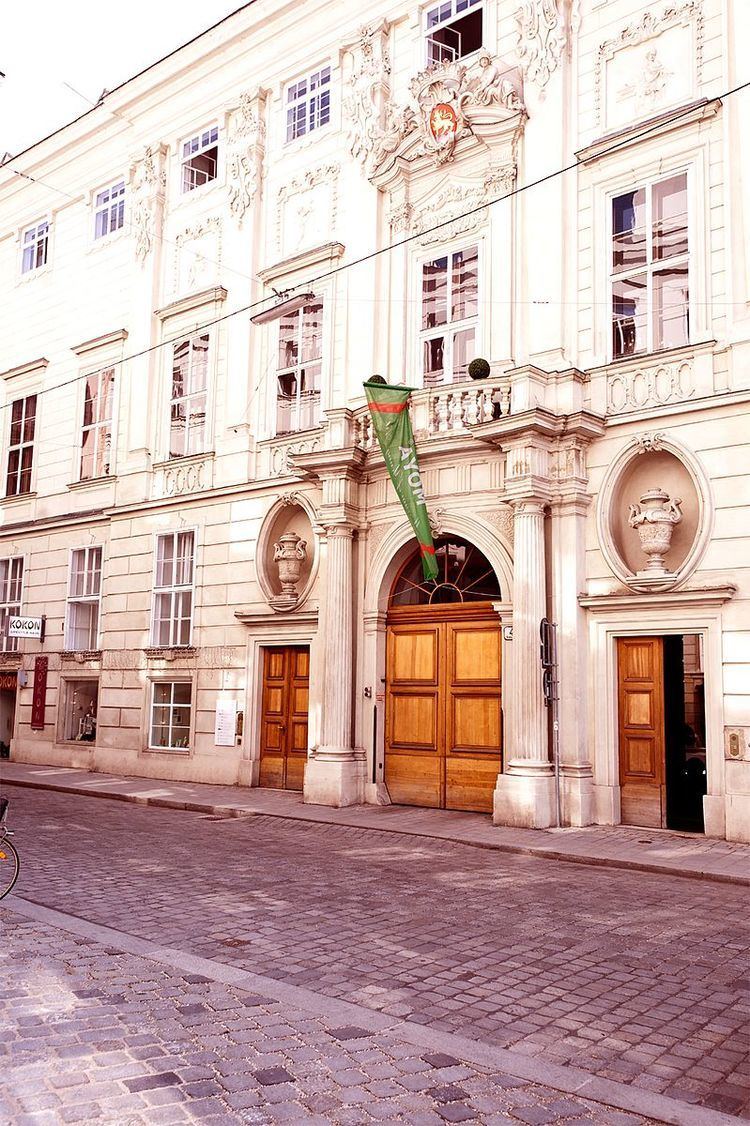Phone +43 1 5351989 | Founded 2005 | |
 | ||
Similar Palais Schönborn‑Batthyány, Southern Nevada Museum, Innere Stadt, Pasqualati House, MUSA Museum Startgaler | ||
Miro tomarkin interview at the vienna showcase museum of young art wien
The Museum Of Young Art (MOYA) founded 2005 in Vienna, Austria, was the first museum worldwide exclusively devoted to 21st-century young art. The MOYA was privately owned, founded & owned by the swiss and german art historian and art manager Dr. Kolja Kramer. It presented artworks produced after the year 2000 only and it focussed especially on the early work of artists. Artists also did not necessarily have to be fully established. A risk with regard to long term art historical relevance was taken for the sake of art historical speculation. The MOYA also functioned as a springboard for many young artists. In 2015 the MOYA-Museum of Young Art in Vienna was closed. The transfer of the MOYA-Museum of Young Art outside Austria is planned at present.
Contents
- Miro tomarkin interview at the vienna showcase museum of young art wien
- Artbanka museum of young art
- Location
- Represented countries
- Artists
- References
Artbanka museum of young art
Location
The first location of the MOYA was right at the famous Vienna Ring Road, next to Vienna`s Burgtheater and the Rathaus, Vienna, in Löwelstrasse 20, 1010 Vienna. In 2010 it moved to a larger city palace nearby, to Palais Schönborn-Batthyány at the Freyung, built by the important baroque architect Johann Bernhard Fischer von Erlach, in the heart of Vienna, Renngasse 4, 1010 Vienna.
Represented countries
In the MOYA Mainly contemporary young European art was presented even though there was a concentration on regional art from Vienna and Austria and its neighbouring countries. The MOYA functioned as a gate the east with its many exhibitions and artists from Eastern Europe. The annual show `Young Art Global´ regularly put the regional context in a broader spatialtemporal perspective with international artists from all over the world. The MOYA was closely related to the diplomatic circle in Vienna and collaborated with cultural institutes and international art institutions in the countries. In 2014 the MOYA received the Flame of Peace, an award given by members of the Habsburg family for contributions to world peace.
The following countries were represented in the MOYA by artists in cooperation with ministries, embassies and cultural institutes and institutions of the following countries: Andorra, Austria, Azerbaijan, Belgium, Brazil, China, Colombia, Costa Rica, Croatia, Cyprus, Czech Republic, Estonia, Germany, Greece, Guatemala, Hungary, India, Ireland, Italy, Japan, Latvia, Liechtenstein, Luxemburg, Malaysia, Malta, Netherlands, Norway, Panama, Philippines, Poland, Portugal, Romania, Saudi Arabia, Slovakia, Slovenia, Sweden, Switzerland, Turkey, Ukraine.
Artists
Represented artists in the MOYA were such as Andrejs Ameļkovičs, Santiago Ayerbe, Mervat Alameer, Bernhard Ammerer, Renatta Avila, Aris Bagdas, Zsófi Barabás, Marius Bercea, Anca Benera, Adam Bota, Bernahrd Buhmann, Gilbert Calleja, Nuno André Coelho, Orla Conolly, Suzana Dan, Naomi Devil, Juliana Do, Markus Dressler, Karin Frank, Maria Friberg, Agnes Gazdag, Die 4 Grazien, Urban Grünfelder, László Györffy, Heiri Häfliger, Klaus Henckelmann, Anna Hilti, Michael Horsky, Liu Cheng Hua, Ina Hsu, Patrícia Jagicza, Wu Chan Jian, Grzegorz Klaman, Bas van Koolwijk, Kristian Kozul, Mela Kaltenegger, Ganna Kryvolap, Toni Mestrovic, Youn-Hee Moon, Robert Muntean, Jacek Niegoda, Michael Ornauer, Ceren Oykut, Andrea Papageorgiu, Eva Petric, József Pinczés, José Pozo, Marcus Proschek, Chen Qi, Emmanuel Fretes Roy, Alexandru Radvan, Bianca Regl, Reyes, Dorota Sadovska, Laura Samaraweerowá, Josephine Scianna, Susanna Schwarz, Skero, Dominika Skutnik, Marek Sobcyk, Nórá Soós, Stylianos Schicho, András Szabó, Peter Szarka, Michal Szlaga, Géza Szöllösi, Lefteris Tapas, Sorin Tara, Iv Toshain, Tomaz Tomazin, Iacopo Toppazzini, Mirela Traistaru, Christina Tsialis, Iuliana Vilsan, Agnés Verebics, Kati Verebics, Mart Viljus , Klaus Wanker, Adalbert Wazek, Letitia Werth, Sula Zimmerberger, Liu Xiuming and many others.
